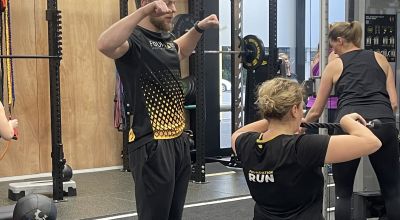MRI is a fantastic imaging modality that provides detailed information on almost all major musculoskeletal structures. As a result, it is an excellent study to help with the assessment of musculoskeletal injuries. There is an increasing expectation from patients, referrers and ACC that the patient will be referred for this type of study. There is however often a disconnect between the level of importance a patient places on their imaging and the importance that their clinician places on it. This has been highlighted by a recent study that shows that the patient’s perception of the quality of the service they receive is inversely proportional to the quality of the medicine that the clinician feels that they have provided. Basically, when a patient receives antibiotics for their cold or an MRI for their back pain they might feel that they have received a great service. The clinician, however, is likely to feel that they have not provided good quality evidence-based treatment. The patient perception is often that an MRI is needed to establish their diagnosis. In reality, though the MRI makes a small, but important, contribution to the patient’s diagnosis. For example, when I see a patient with an anterior cruciate ligament injury the diagnosis has generally already been made by listening to their history and confirmed when I examine their knee. For the patient though, the MRI is often an important step for helping them accept their diagnosis and buy into a treatment plan. Physically seeing their torn ACL on the computer screen is often needed for them to be able to move on and progress their treatment plan. For the clinician, though the role of the MRI is more to look for other associated injuries (like a meniscal tear) that might impact their treatment.
One of the other major issues with MRI imaging is the relatively high incidence of asymptomatic findings. For example, almost all patients in their 30’s or 40’s will have abnormal disc changes on a lumbar MRI, about a third of patients have changes involving their meniscus (knee) and almost all patients in their middle years will have an abnormal shoulder MRI. As a result, the scan can often create confusion. There are often also multiple pathologies on a given scan that could all be contributing to the patient’s symptoms. In this situation, the clinical diagnosis becomes very important as it guides the treatment plan. This situation can also be very confusing for the patient as they can become unnecessarily concerned or preoccupied with what are likely to be ‘normal’ abnormal findings. For many patients, it is better to treat their symptoms rather than get early imaging. When a scan is ordered careful education is needed to make sure that they understand the significance (or lack of significance) of these anatomical changes.
Patients often also ask about whether an MRI is needed to help with their return to play or return to activity plan. In general, repeating the imaging is not helpful. I often talk about the difference between clinical resolution and radiological resolution. Basically, a patient’s symptoms usually get better far before the imaging findings resolve. As a result making decisions on clinical grounds (the absence of pain, return of normal strength and a graded return to activity) is far more reliable. Treating them based on the scan findings might mean that they have an unnecessarily prolonged absence from their work, sport or school life.
In short, MRI (and other forms of high-tech) imaging is a fantastic tool that I am using more and more. It is, however, a poor substitute for a thorough clinical assessment. In most cases, the imaging is used to confirm the working diagnosis – rather than to make a diagnosis.
Reference: Dr Mark Fulcher, Axis Sports Medicine.
Related posts

Congratulations to the winners of the 2025 Foundation Tauranga Awards!

Congratulations to the winners of the 2025 Foundation Hamilton Awards!

If you want faster recovery and long-term results, your rehab needs to look like the life you want to get back to.







